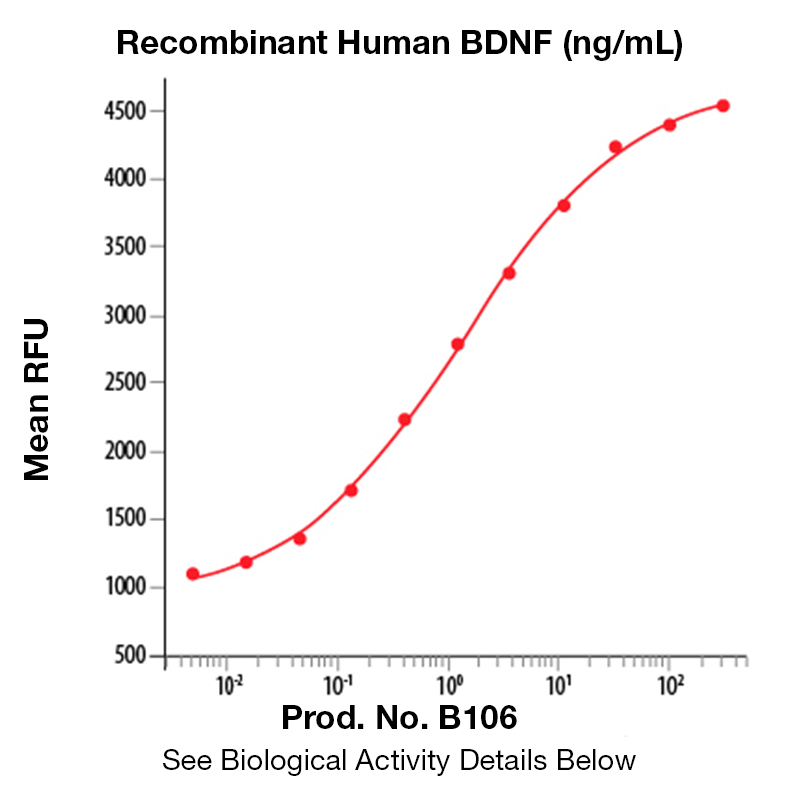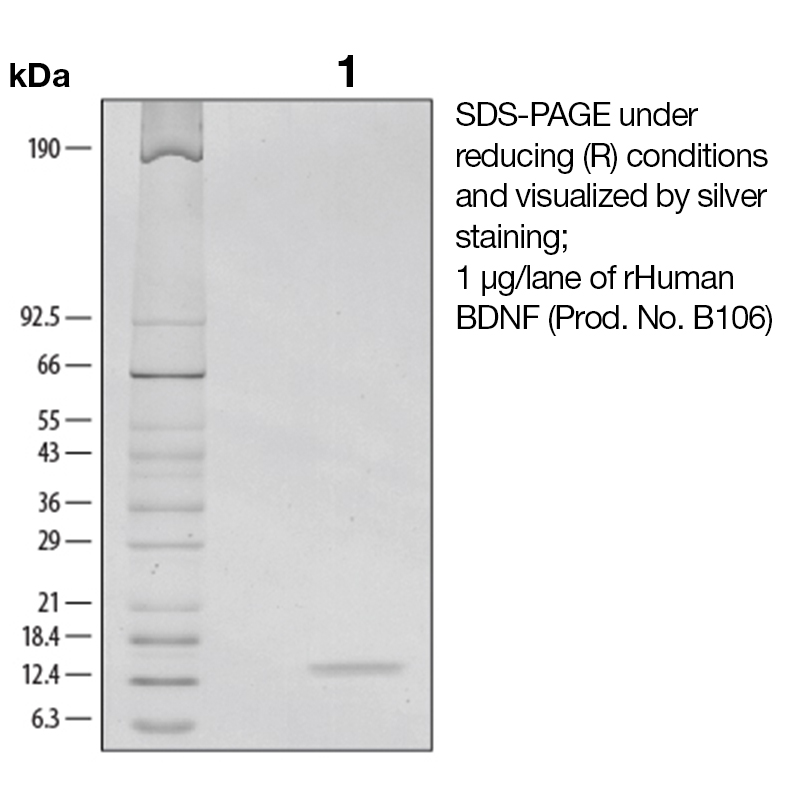Recombinant Human Brain-derived neurotropic factor (BDNF)
Data
- -
- -
BackgroundBrain-derived neurotropic factor (BDNF), also known as MGC34632, is a member of the NGF family of neurotrophic growth factors that includes NGF, NT-3, and NT-4/5. Like other members of this family, BDNF supports neuron proliferation and survival (1). It acts on certain neurons of the central and peripheral nervous systems, helping to support the survival of existing neurons and encourage the growth and differentiation of new neurons and synapses. In the brain, BDNF is active in the hippocampus, cortex, and basal forebrain, areas vital to learning, memory and higher thinking (2). Despite its name, BDNF is actually found in a range of tissue and cell types, not just in the brain. It is also expressed in the retina, the CNS, motor neurons, the kidneys and the prostate. BDNF binds at least two receptors on the surface of cells which are capable of responding to this growth factor, TrkB and the LNGFR (3). Expression of BDNF is reduced in both Alzheimer's and Huntington disease patients (4-5). In addition, functional studies showed that age-associated changes in BDNF-mediated pathways can enhance inflammation and increase myocardial injury after myocardial infarction in the aging heart (6). Various studies have shown possible links between BDNF and other conditions, such as depression, schizophrenia, obsessive-compulsive disorder, Rett syndrome, dementia, anorexia nervosa, bulimia nervosa, epilepsy and eczema. Protein DetailsPurity >97% by SDS-PAGE and analyzed by silver stain. Endotoxin Level <1.0 EU/µg as determined by the LAL method Biological Activity The biological activity of Human BDNF was determined by its ability to stimulate proliferation of the TrkB transfected cell line, Baf-TrkB. The expected ED<sub>50</sub> for this effect is typically 3 - 10 ng/ml. Amino Acid Sequence hsdparrgel svcdsisewv taadkktavd msggtvtvle kvpvskgqlk qyfyetkcnp mgytkegcrg idkrhwnsqc rttqsyvral tmdskkrigw rfiridtscv ctltikrgr N-terminal Sequence Analysis His129 State of Matter Lyophilized Predicted Molecular Mass The predicted molecular weight of Recombinant Human BDNF is Mr 13.5 kDa However, the actual molecular weight as observed by migration on SDS-PAGE is Mr 13-14 kDa (reducing conditions) and 11-12 kDa (non-reducing conditions). Predicted Molecular Mass 13.5 Formulation This recombinant protein was 0.2 µm filtered and lyophilized from a filtered solution in 100mM Sodium Citrate and 300 mM NaCl, pH 3.0. Storage and Stability This lyophilized protein is stable for six to twelve months when stored desiccated at -20°C to -70°C. After aseptic reconstitution, this protein may be stored at 2°C to 8°C for one month or at -20°C to -70°C in a manual defrost freezer. Avoid Repeated Freeze Thaw Cycles. See Product Insert for exact lot specific storage instructions. Country of Origin USA Shipping Next Day Ambient NCBI Gene Bank References & Citations1. Acheson, A. et al. (1995) Nature 374:450 2. Yamada, K. et al. (2003) J. Pharmacol. Sci. 91 :267 3. Patapoutian, A. et al. (2001) Curr. Opin. Neurobiol. 11:272 4. Zuccato, C. et al. (2009) Nat. Rev. Neurol. 5:311 5. Zajac, MS. et al. (2009) Hippocampus 20:621 6. Cai, D. et al. (2006) Physiol. Genomics 24:191 Certificate of AnalysisIMPORTANT Use lot specific datasheet for all technical information pertaining to this recombinant protein. |




